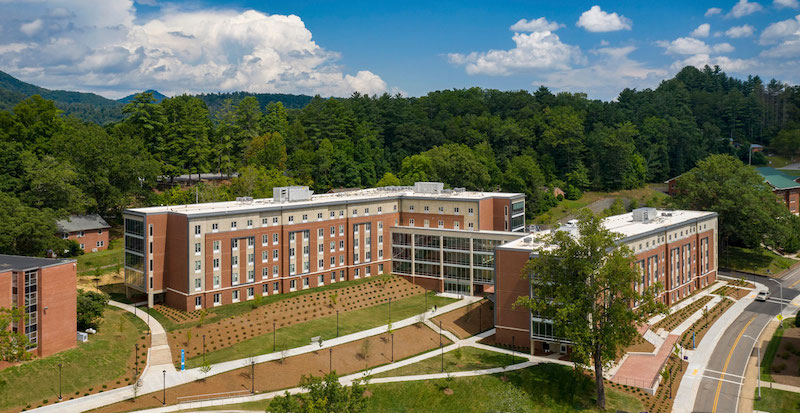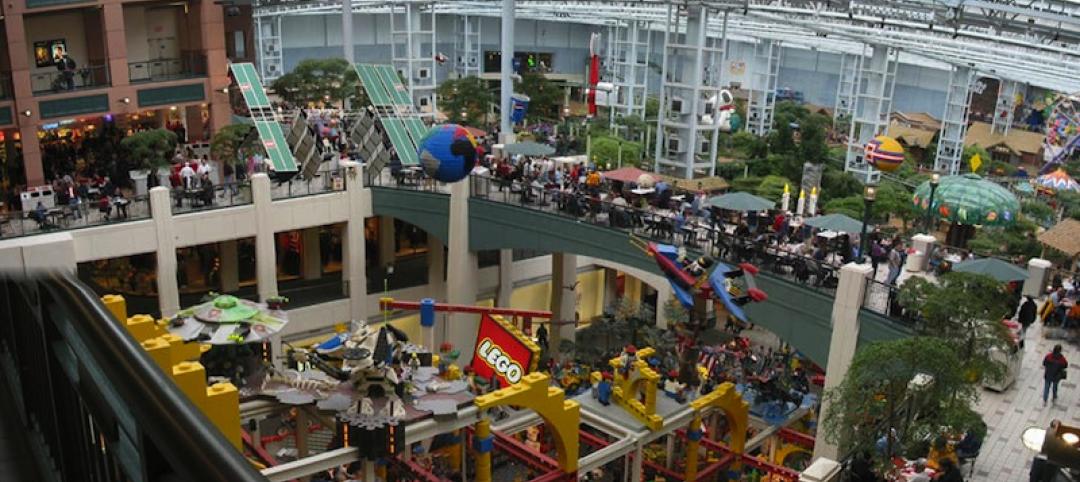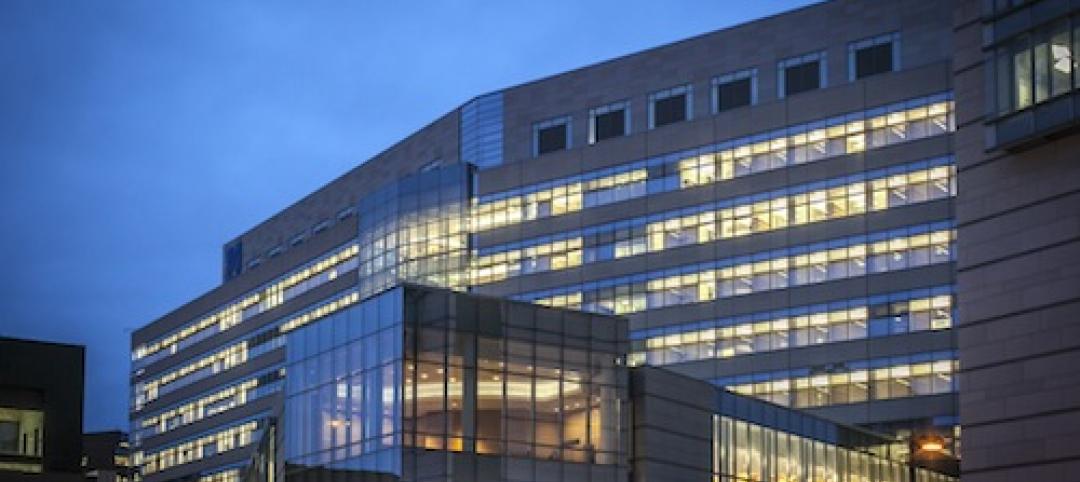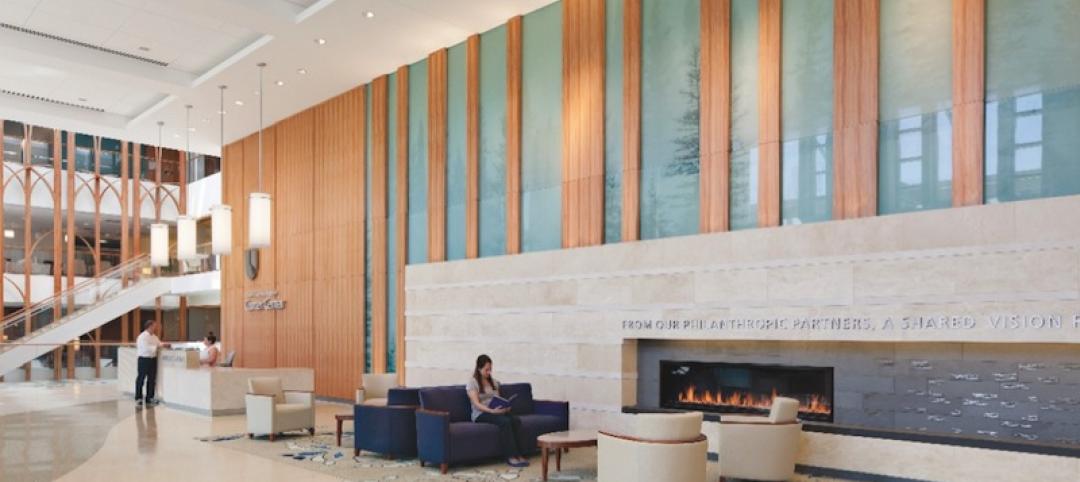When it comes to designing and building new student housing, speed is typically of the essence as colleges and universities are eager to get those beds online as quickly as possible. For schools in regions with inclement winter weather, speed takes on additional meaning: getting dried in before cold temperatures and bad weather arrives ensures construction can keep moving forward despite outdoor conditions.
A variety of material solutions are emerging to accelerate construction timelines, and precast concrete has become an attractive option. The stacking nature of living units make precast and student housing uniquely well-suited to each other. Alongside the need for speed is the importance of ensuring an engaging student life experience, which is critical for student success and retention. The most effective student housing design works with these systems to create the open, inviting social spaces that are fundamental to fostering connections between students.
Capitalizing on Speed, Cost, and Other Side Benefits
Precast concrete systems offer a number of advantages: the building(s) go up faster, the overall project cost is often lower, and side benefits like inherent fire rating, sound proofing, and insulation add extra appeal. No system is perfect – concrete is rigid, gets poor marks for embodied carbon, and has limitations in terms of spans and floor-to-floor height – but the product offers an undeniable value in the multi-unit housing world.
At Western Carolina University, using precast concrete for the new Allen Hall’s exterior walls, floor slabs, and roof reduced the typical construction timeline by six months. Not only did the project get under cover more quickly, the product essentially saved a year in university time by allowing the new facility to open in fall 2019 rather than fall 2020.
Similar to WCU, when Clemson’s Douthit Hills Student Community was designed and built, speed of construction was the predominant factor in the selection of precast concrete. At the time, Metromont was the only manufacturer with this type of innovative system, but today, other manufacturers have entered the market and are creating a more competitive cost landscape.
 The Douthit Hills Student Community is the largest capital project in Clemson’s history, encompassing seven new residence halls and a central Hub building. It delivered on a key goal to make on-campus housing more attractive to students, achieving full occupancy within two days of opening for lease.
The Douthit Hills Student Community is the largest capital project in Clemson’s history, encompassing seven new residence halls and a central Hub building. It delivered on a key goal to make on-campus housing more attractive to students, achieving full occupancy within two days of opening for lease.
Beyond shortening the construction schedule, precast concrete offers a variety of other perks. It reduces the demand for on-site labor (and for construction during COVID, allows for more space between workers). For campuses struggling with budgets, it is an increasingly appealing option. While the systems are expensive, the overall project realizes cost savings driven by things you don’t have to do and the naturally long lifecycle of concrete, which produces 50- to 100-year buildings versus 25-year buildings.
The “things you don’t have to do” include a host of items. The smooth underside of the slab means you can leave it exposed, paint it, and call it a day – skipping the labor and material costs associated with drywall, which can save hundreds of thousands of dollars. The same is true in circumstances where corridors have smooth walls that can be left exposed and painted. Concrete inherently gives the design its fire rating – an advantage on housing projects. It also delivers sound proofing and insulation thanks to its dense structure. In addition to a long building lifecycle, concrete reduces annual maintenance as a result of its durability. Students are typically hard on their residence halls, and concrete stands up to that wear and tear much better than drywall.
Alongside getting dried in before winter weather, the longevity of a concrete building was a factor in its selection by Virginia Tech, which is using a precast system for the first time on its newest addition to the Upper Quad. In contrast to both Clemson and WCU, which left up to 40% of the precast concrete exposed on the exterior façade, VT will integrate its iconic Hokie Stone.
 The new Upper Quad Residence Hall will house nearly 300 cadets once complete. The design team was able to open up space within the building and accommodate more beds by taking advantage of space created at the attic between the concrete slab and the pitched roof to house the building’s mechanical equipment.
The new Upper Quad Residence Hall will house nearly 300 cadets once complete. The design team was able to open up space within the building and accommodate more beds by taking advantage of space created at the attic between the concrete slab and the pitched roof to house the building’s mechanical equipment.
The different approaches taken by Clemson, WCU, and VT showcase the aesthetic opportunities offered by the precast product. For example, the exterior brick on WCU’s Levern Hamlin Allen Hall (with the exception of the first floor) is a thin veneer that is integral to the concrete panel, reducing on-site labor and making construction more efficient.
 Architecturally, visual interest is added to the exterior façade by using a form liner on the precast concrete and integrating a metal brow and shadow boxes for depth.
Architecturally, visual interest is added to the exterior façade by using a form liner on the precast concrete and integrating a metal brow and shadow boxes for depth.
Ensuring A Good Student Experience Through Design
The success of any student housing project can ultimately be measured by how students make use of the spaces and engage with each other. While speed of construction is the primary reason for selecting precast concrete for student housing, our architects work with manufacturers and contractors to integrate the open, airy lobbies and common spaces that appeal to students. David Goldsmith, AIA, an architect in our Asheville office, notes that it was “very important to ensure the design had those high quality, high profile social spaces. When you’re working within a system like this, open environments can be achieved but it requires collaboration and extra effort between the design team and the precast manufacturer.”
At WCU, this collaboration led to the creation of two-story atriums at each of the three primary entry points. Our structural engineer, Marcus Whitaker, PE, shares that working with Metromont’s engineers made these results possible. “Their knowledge of the product was critical; together, we found ways to use the deck product to eliminate beams and columns, which in turn enabled the design to have large, light-filled social spaces.” Both David and Marcus expressed that the shared, intentional effort to provide a variety of inviting commons areas was central to the project’s success.
 Storefront glazing along the pedestrian bridge and group study rooms that cap each residential corridor allow more natural light into the building and reinforce students’ sense of connection with the campus beyond. The design team capitalized on the use of precast in these bright open spaces. By using a form liner pattern and exposing the concrete on the interior, it stands out as a reveal and complements the clean, white walls and sleek wood paneling. Photos courtesy Vannoy Construction.
Storefront glazing along the pedestrian bridge and group study rooms that cap each residential corridor allow more natural light into the building and reinforce students’ sense of connection with the campus beyond. The design team capitalized on the use of precast in these bright open spaces. By using a form liner pattern and exposing the concrete on the interior, it stands out as a reveal and complements the clean, white walls and sleek wood paneling. Photos courtesy Vannoy Construction.
Throughout the building, the precast concrete deck achieved long, 30 foot spans with a low floor-to-floor height, thanks to being filled in part with foam. This composition resulted in a vertically shorter, more efficient building while allowing higher ceilings (9 ½ to 10 feet, versus 8 feet) in the interior spaces. Precast concrete can also be precut to accommodate conduit, concealing the building systems for a smoother aesthetic. All drawings – architectural, mechanical, and electrical – must be well-coordinated and precise to ensure this effort is executed well in the field.
Precast concrete systems like those used by Clemson, VT, and WCU offer compelling benefits for student housing. The growth of this market with multiple companies now offering similar precast systems is meeting demand while increasing competition on cost. As we continue to see schools (and developers on P3 projects) prioritize speed of delivery and construction cost savings on student housing projects, I expect we’ll also see these systems used more frequently.
Related Stories
| Jun 5, 2013
USGBC: Free LEED certification for projects in new markets
In an effort to accelerate sustainable development around the world, the U.S. Green Building Council is offering free LEED certification to the first projects to certify in the 112 countries where LEED has yet to take root.
| Jun 3, 2013
Construction spending inches upward in April
The U.S. Census Bureau of the Department of Commerce announced today that construction spending during April 2013 was estimated at a seasonally adjusted annual rate of $860.8 billion, 0.4 percent above the revised March estimate of $857.7 billion.
| May 20, 2013
Jones Lang LaSalle: All U.S. real estate sectors to post gains in 2013—even retail
With healthier job growth numbers and construction volumes at near-historic lows, real estate experts at Jones Lang LaSalle see a rosy year for U.S. commercial construction.
| Apr 30, 2013
Tips for designing with fire rated glass - AIA/CES course
Kate Steel of Steel Consulting Services offers tips and advice for choosing the correct code-compliant glazing product for every fire-rated application. This BD+C University class is worth 1.0 AIA LU/HSW.
| Apr 24, 2013
Los Angeles may add cool roofs to its building code
Los Angeles Mayor Antonio Villaraigosa wants cool roofs added to the city’s building code. He is also asking the Department of Water and Power (LADWP) to create incentives that make it financially attractive for homeowners to install cool roofs.
| Apr 2, 2013
6 lobby design tips
If you do hotels, schools, student unions, office buildings, performing arts centers, transportation facilities, or any structure with a lobby, here are six principles from healthcare lobby design that make for happier users—and more satisfied owners.
| Mar 14, 2013
25 cities with the most Energy Star certified buildings
Los Angeles, Washington, D.C., and Chicago top EPA's list of the U.S. cities with the greatest number of Energy Star certified buildings in 2012.
















